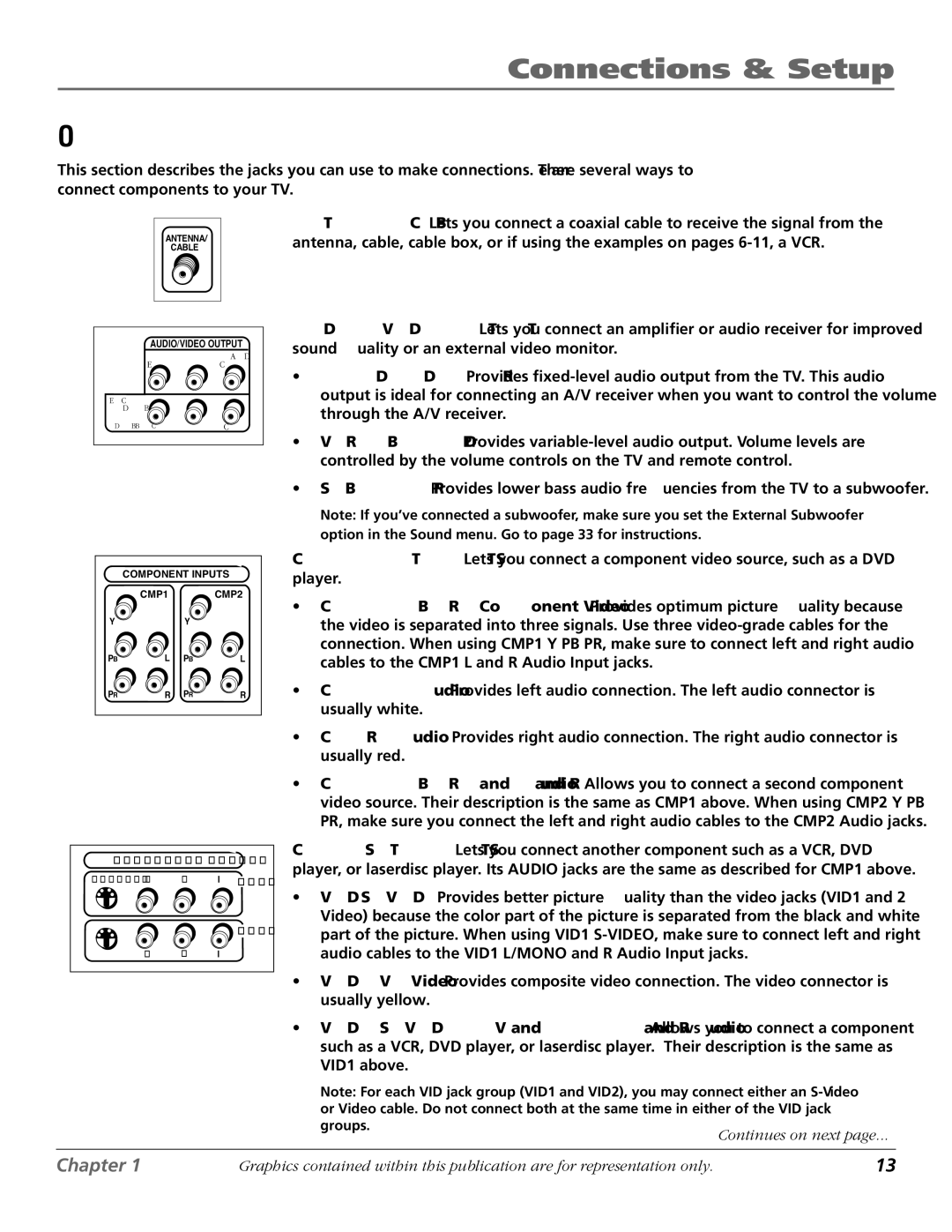
Connections & Setup
Explanation of Jacks (in alphabetical order)
This section describes the jacks you can use to make connections. There are several ways to connect components to your TV.
��������
�����
ANTENNA/CABLE Lets you connect a coaxial cable to receive the signal from the antenna, cable, cable box, or if using the examples on pages
AUDIO/VIDEO OUTPUT
�����������
� � �
��������
�����
��������� � �
AUDIO/VIDEO OUTPUT Lets you connect an amplifier or audio receiver for improved sound quality or an external video monitor.
•FIXED AUDIO L/R Provides
•VARIABLE AUDIO Provides
•SUBWOOFER Provides lower bass audio frequencies from the TV to a subwoofer.
Note: If you’ve connected a subwoofer, make sure you set the External Subwoofer option in the Sound menu. Go to page 33 for instructions.
����������������
| ���� |
| ���� |
� |
| � |
|
�� | � | �� | � |
�� | � | �� | � |
����������������
������� � � � ����
����
� � �
COMPONENT INPUTS Lets you connect a component video source, such as a DVD player.
•CMP1 Y PB PR (Component Video) Provides optimum picture quality because the video is separated into three signals. Use three
•CMP1 L (Audio) Provides left audio connection. The left audio connector is usually white.
•CMP1 R (Audio) Provides right audio connection. The right audio connector is usually red.
•CMP2 Y PB PR, and L and R Audio Allows you to connect a second component video source. Their description is the same as CMP1 above. When using CMP2 Y PB PR, make sure you connect the left and right audio cables to the CMP2 Audio jacks.
COMPOSITE INPUTS Lets you connect another component such as a VCR, DVD player, or laserdisc player. Its AUDIO jacks are the same as described for CMP1 above.
•VID1
•VID1 V (Video) Provides composite video connection. The video connector is usually yellow.
•VID2
Allows you to connect a component Their description is the same as
Note: For each VID jack group (VID1 and VID2), you may connect either an
Chapter 1 | Graphics contained within this publication are for representation only. | 13 |
